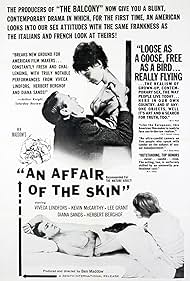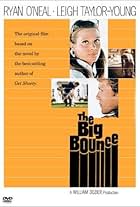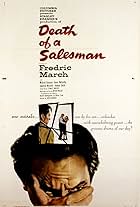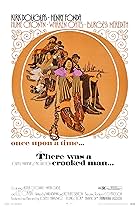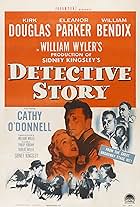A neurotic woman, her unhappy husband and three other New Yorkers share a complicated relationship.A neurotic woman, her unhappy husband and three other New Yorkers share a complicated relationship.A neurotic woman, her unhappy husband and three other New Yorkers share a complicated relationship.
Photos
- Director
- Writer
- All cast & crew
- Production, box office & more at IMDbPro
Storyline
Featured review
I was one of several excited cinema loving patrons to see this film for the first time in years at a Film Forum screening of a rare 16mm print on February 3, 2020, as part of the venue's "Black Women" series. First things first: Diana Sands is one of the great unsung American actresses, but she is given nothing to do in this film, and as the sole "black woman" in the film, I'm not sure why this was programmed as part of this series. It was also billed as part of another series, a Lee Grant retrospective, which makes more sense because she is one of the true stars of the film; she also starred in the predecessor to this film, THE BALCONY, also screened at Film Forum.
Writer/director Ben Maddow is responsible for a number of superb screenplays, but this is one of his most oblique and inaccessible works. The film was distributed by Zenith International, a company who usually handled foreign titles for arthouse exhibition. Maddow's film is a perfect fit for them because he is trying desperately to mimic the films coming out of Europe and Japan at the time, with stark b&w photography, slow methodical pacing, overwhelmingly "meaningful" narration and monologues, and sparse use of music on the soundtrack. The story is barebones: Kevin McCarthy and Lee Grant are unhappily married. She leaves to visit their son at a military boarding school in Boston and in her absence he has an affair with model Viveca Lindfors. He also meets photographer Diana Sands (best part of the movie), who has a fraught relationship with her conservative mother after the death of her beloved father. Lindfors becomes pregnant, McCarthy agonizes over whether to pay for her abortion and shows up at Sands' apartment to whine about it, he applies for a computer programming program, eventually leaves Grant for Lindfors, and I walked out. I wasn't the only one, either. Several other patrons had their patience tested and couldn't take it any longer. I lasted longer than them; there may have been more after I vacated.
As I told a colleague who also walked out of the screening: imagine a film about Don Draper drinking, philandering, being a blowhard at parties, leaving his mistress in the lurch, pestering a promising single photographer in the middle of the night to ease his guilt (which she refuses to do), abandoning his wife and son.... This is the hero of the movie, a white male "anti-hero" which I think we've seen more than enough of over the years. If the film had followed Sands' photographer as she took snapshots of the decaying New York streets and its inhabitants and dealt with her mother's smothering behavior, as well as embellishing on her vague relationship with her father, that would have been a film to watch, and a landmark film focusing on a black American woman's life in the 1960s. There's a reason AN AFFAIR OF THE SKIN is so obscure: it's best forgotten, a minor footnote on the resumes of the very talented people involved. It was re-edited and reissued in 1973 as LOVE AS DISORDER, with more of an emphasis on Sands' character (she would die a year later, tragically young). This version will screen at MoMA as part of *their* black women series, "It's All in Me", and I might give this one a try again just to see if it improves with a good editor eliminating a considerable amount of the whiny rich white people footage.
Writer/director Ben Maddow is responsible for a number of superb screenplays, but this is one of his most oblique and inaccessible works. The film was distributed by Zenith International, a company who usually handled foreign titles for arthouse exhibition. Maddow's film is a perfect fit for them because he is trying desperately to mimic the films coming out of Europe and Japan at the time, with stark b&w photography, slow methodical pacing, overwhelmingly "meaningful" narration and monologues, and sparse use of music on the soundtrack. The story is barebones: Kevin McCarthy and Lee Grant are unhappily married. She leaves to visit their son at a military boarding school in Boston and in her absence he has an affair with model Viveca Lindfors. He also meets photographer Diana Sands (best part of the movie), who has a fraught relationship with her conservative mother after the death of her beloved father. Lindfors becomes pregnant, McCarthy agonizes over whether to pay for her abortion and shows up at Sands' apartment to whine about it, he applies for a computer programming program, eventually leaves Grant for Lindfors, and I walked out. I wasn't the only one, either. Several other patrons had their patience tested and couldn't take it any longer. I lasted longer than them; there may have been more after I vacated.
As I told a colleague who also walked out of the screening: imagine a film about Don Draper drinking, philandering, being a blowhard at parties, leaving his mistress in the lurch, pestering a promising single photographer in the middle of the night to ease his guilt (which she refuses to do), abandoning his wife and son.... This is the hero of the movie, a white male "anti-hero" which I think we've seen more than enough of over the years. If the film had followed Sands' photographer as she took snapshots of the decaying New York streets and its inhabitants and dealt with her mother's smothering behavior, as well as embellishing on her vague relationship with her father, that would have been a film to watch, and a landmark film focusing on a black American woman's life in the 1960s. There's a reason AN AFFAIR OF THE SKIN is so obscure: it's best forgotten, a minor footnote on the resumes of the very talented people involved. It was re-edited and reissued in 1973 as LOVE AS DISORDER, with more of an emphasis on Sands' character (she would die a year later, tragically young). This version will screen at MoMA as part of *their* black women series, "It's All in Me", and I might give this one a try again just to see if it improves with a good editor eliminating a considerable amount of the whiny rich white people footage.
Details
- Release date
- Country of origin
- Language
- Also known as
- Love as a Disorder
- Filming locations
- See more company credits at IMDbPro
- Runtime1 hour 42 minutes
- Color
- Sound mix
- Aspect ratio
- 1.37 : 1
Contribute to this page
Suggest an edit or add missing content

Top Gap
By what name was An Affair of the Skin (1963) officially released in Canada in English?
Answer